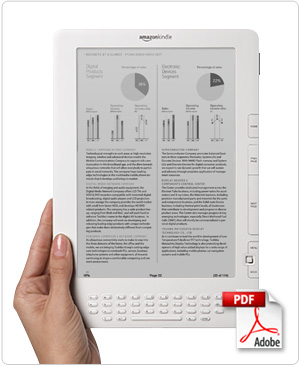The Atlanta Journal-Constitution is profitable again, and “This ensures that we can continue to produce the quality journalism that you’ve told us is important to you,” crows Publisher Michael Joseph in a 1,000-word tribute to all that the paper is doing for its community. “Our improved financial picture is allowing us to again expand content offerings that are targeted toward what you’ve told us really matters in your lives.”
It will be interesting to see if area readers agree with this publisher’s optimism (comments are disabled on the essay), for the AJC has suffered some of the worst cutbacks of any major metro daily. In early 2009, the paper laid off 30% of its editorial staff, reducing its total size to less than half of what it was in 2006. Distribution to seven outlying counties was discontinued, coming on top of an earlier decision to cut all its regional editions. The AJC daily circulation fell 52% between 2002 and 2010, although some of that loss was self-inflicted due to distribution cutbacks.
The question is whether a newspaper with a staff of 230 journalists can produce the same quality of material as one with 500. We don’t want to dismiss out of hand the possibility that it can, but it won’t look anything like the paper it was a few years ago. In a desperate bid to survive amid its circulation free-fall, the AJC has completely upended its editorial model over the last five years, turning most of its attention to the suburbs and vacating its downtown offices in August in favor of cheaper space near the northern suburb of Dunwoody It has taken steps to address a perceived left-wing bias and chosen not to endorse candidates in recent elections. The AJC has partnered with local Cox TV and radio stations on tag-team reporting projects, attempted to partner with local weeklies to share content and even run occasional pieces from Demand Media, the crowdsourced editorial engine that assigns stories by keyword relevancy.
Can you cost cut your way back to success? The AJC will be on the leading edge of answering that question. There’s nothing like a near-death experience to focus the mind, and in slashing its costs, the paper has had to make some grueling decisions. Its experience is probably familiar to many in the industry, where the shift of the audience to the suburbs has challenged publishers to remain relevant at the local level its audience cares most about. It helps that the AJC has a near monopoly in its market, and that its website is the default destination for news about all things Atlanta. There’s nothing particularly special about its Web presence, but it was one of the first major dailies to release an iPad app.
Its free classifieds service is an acknowledgment that there is no more money in that business anymore. The question is where the revenues are going to come from? A lot of eyes in Atlanta will no doubt be on The New York Times as it attempts to launch a paid online subscription model in the first quarter. For a paper with the regional clout of the AJC, that may be just what the doctor ordered.
The New York Times asks if comedian Jon Stewart is the modern-day Edward R. Murrow, citing Stewart’s advocacy for legislation awarding health-care benefits to 9/11 responders that passed in the last hours of the 111th Congress. Stewart devoted his Dec. 16 show to the bill, which had received little coverage in mainstream media and was about to die with Congress’ adjournment. That show is widely credited with having resuscitated efforts to get the measure approved. Stewart says he isn’t a journalist, but the Times points to similar advocacy reporting by Murrow and Walter Cronkite that shifted public opinion about events in their time, and suggests that Stewart’s appeal to young audiences may kindle an interest in advocacy journalism by a new generation.
 People passing by newsstands in Sacramento may do a double take when they hear the “talking news rack” deliver a 15 second recorded message each time a newspaper’s purchase. The news racks also have a scrolling LED that can display news, messages from the editor and even ads.
People passing by newsstands in Sacramento may do a double take when they hear the “talking news rack” deliver a 15 second recorded message each time a newspaper’s purchase. The news racks also have a scrolling LED that can display news, messages from the editor and even ads.
 In the weeks before her death from the rare disorder of peripartum cardiomyopathy, Shana Swers documented her ordeal on Facebook. Reporter Ian Shapira was intrigued, and when the Washington Post assigned him to tell the story, he chose to anchor it in Swers’ own Facebook posts. The clips from Swers’ wall were annotated by Shapira, who did the traditional blocking and tackling of interviewing family members and medical experts, but the writer chose to sacrifice the journalist’s traditional privilege of owning the narrative. The piece is already being held up as one of the most innovative alternative news stories of the year. Mallary Jean Tenore provides more background on Poynter.
In the weeks before her death from the rare disorder of peripartum cardiomyopathy, Shana Swers documented her ordeal on Facebook. Reporter Ian Shapira was intrigued, and when the Washington Post assigned him to tell the story, he chose to anchor it in Swers’ own Facebook posts. The clips from Swers’ wall were annotated by Shapira, who did the traditional blocking and tackling of interviewing family members and medical experts, but the writer chose to sacrifice the journalist’s traditional privilege of owning the narrative. The piece is already being held up as one of the most innovative alternative news stories of the year. Mallary Jean Tenore provides more background on Poynter.









 How are the early Murdoch paywall experiments in the UK faring? That involves unraveling some complex formulae about the value of free versus paid circulation and the opportunity cost of a paid subscriber. However, for now we are calling
How are the early Murdoch paywall experiments in the UK faring? That involves unraveling some complex formulae about the value of free versus paid circulation and the opportunity cost of a paid subscriber. However, for now we are calling 







